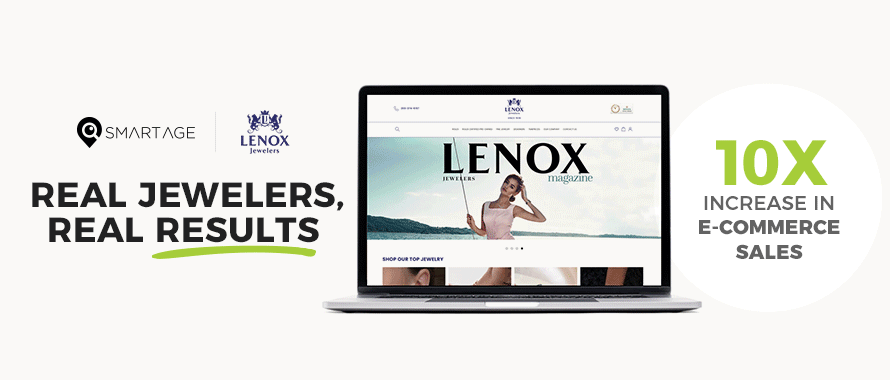Jewelry ECOMM Tech
SEO Page Formatting Basics | March 09, 2025 (0 comments)

Creating a website that stands out in search engine results requires more than just great content. It demands a strategic approach to SEO page formatting, which is a critical component of on-page SEO. If you're looking to enhance your website's visibility and improve its ranking, understanding the nuances of SEO formatting is essential. By mastering SEO page formatting, you not only improve your site's search engine performance but also enhance the overall user experience, which can lead to higher engagement and conversion rates.
As search engines evolve, they increasingly prioritize user-friendly, well-structured content. Thus, adopting effective SEO formatting strategies is crucial for both new and established websites looking to maintain or improve their search engine rankings. With the right techniques, you can ensure that your content is both accessible and appealing to a broad audience, ultimately driving more traffic and achieving your business goals.
Understanding SEO Page Formatting
SEO page formatting involves organizing your web content in a way that makes it easy for search engines to understand and for users to read. It's about structuring your pages to communicate effectively with both human readers and search engine algorithms. This dual approach ensures that your content is not only indexed efficiently by search engines but also provides value to your audience, encouraging them to interact with your site.
When you format your pages correctly, you create a seamless experience for both users and search engines. This involves using proper HTML tags, maintaining a logical content flow, and ensuring the visual presentation is pleasing and intuitive. By paying attention to the details of SEO page formatting, you create a solid foundation for all other SEO efforts, making it easier to attract and retain visitors.
Why SEO Formatting Matters
SEO formatting is crucial because it directly impacts your site's usability and search engine ranking. A well-structured page helps search engines crawl and index your site more effectively, leading to better visibility. Moreover, a properly formatted page improves user experience, encouraging visitors to stay longer and engage more with your content. The longer users stay on your site and interact with your content, the more likely they are to convert, whether that means making a purchase, signing up for a newsletter, or another desired action.
In addition, SEO formatting contributes to your site's credibility and authority. When users find your content easy to navigate and informative, they are more likely to view your site as a reliable resource. This can lead to increased trust and more shares on social media, further amplifying your reach and impact. Therefore, focusing on effective SEO formatting is not just about appeasing search engines but also about building a positive and lasting relationship with your audience.
Key Elements of SEO Page Formatting
To optimize your page formatting for SEO, focus on the following key elements:
Title Tags: Your title tag is one of the most important SEO elements. It should be clear, descriptive, and include your primary keyword. This is the first thing users see in search results, so make it compelling. A well-crafted title tag can significantly increase your click-through rate, driving more organic traffic to your site. It's essential to strike a balance between being informative and engaging to capture the attention of potential visitors.
Headings and Subheadings: Use headings (H1, H2, H3) to organize your content. Your main title should be an H1, and subsequent sections should use H2 and H3 tags. This hierarchy helps search engines understand the structure of your content. Proper use of headings also makes it easier for users to scan your page and find the information they're looking for quickly, improving their overall experience and satisfaction.
Meta Descriptions: A meta description is a brief summary of your page's content. Though it doesn't directly affect rankings, a well-written meta description can increase click-through rates. Crafting an enticing meta description that accurately reflects your content can entice users to choose your link over others, making it a vital component of your SEO strategy.
URL Structure: Keep your URLs clean and descriptive. They should include keywords and accurately reflect the content of the page. A well-structured URL not only aids search engines in understanding your content but also reassures users that they've landed on the right page, enhancing trust and user experience.
Keyword Placement: Use your target keywords naturally throughout your content. Focus on placing them in the first 100 words, headings, and subheadings. Avoid overloading your text with keywords, as this can lead to penalties from search engines. Instead, aim for a natural, conversational tone that incorporates keywords seamlessly.
Internal Linking: Link to other relevant pages within your site. This not only helps users navigate your site but also allows search engines to discover more of your content. Strategic internal linking can also distribute page authority across your site, enhancing the SEO value of all your pages and boosting their visibility.
Image Optimization: Use descriptive file names and alt text for images. This helps search engines understand what the images are about and improves accessibility. Properly optimized images can also reduce load times, contributing to a better user experience and potentially improving your site's search engine rankings.
Conclusion
SEO page formatting is a vital aspect of on-page SEO that can significantly impact your website's visibility and user experience. By implementing these best practices and avoiding common mistakes, you can enhance your site's performance and achieve better search engine rankings. Remember, SEO is an ongoing process, and staying updated with the latest trends and algorithms is key to maintaining your site's competitive edge. As search engines continue to evolve, so too must your strategies, ensuring you remain a step ahead and continue to meet the needs of your audience effectively.
About The Author:
Mike Hauben is the Creative Director and Marketing Director for the Centurion Jewelry Show. He has over fifteen years experience and holds a number of digital certifications (Google, Yoast, Hubspot, and more). Mike has gained recognition among the jewelry industry in recent years as a popular keynote speaker, author, and trusted expert. He’s spoke at conferences like Centurion and JCK at the Javits Center.
He’s received an Award Of Excellence from MMA Business Magazine and is a black belt in Brazilian Jiu Jitsu. He lives with his family in Atlantic Beach, NY.
Learn more: haubenmedia.com


